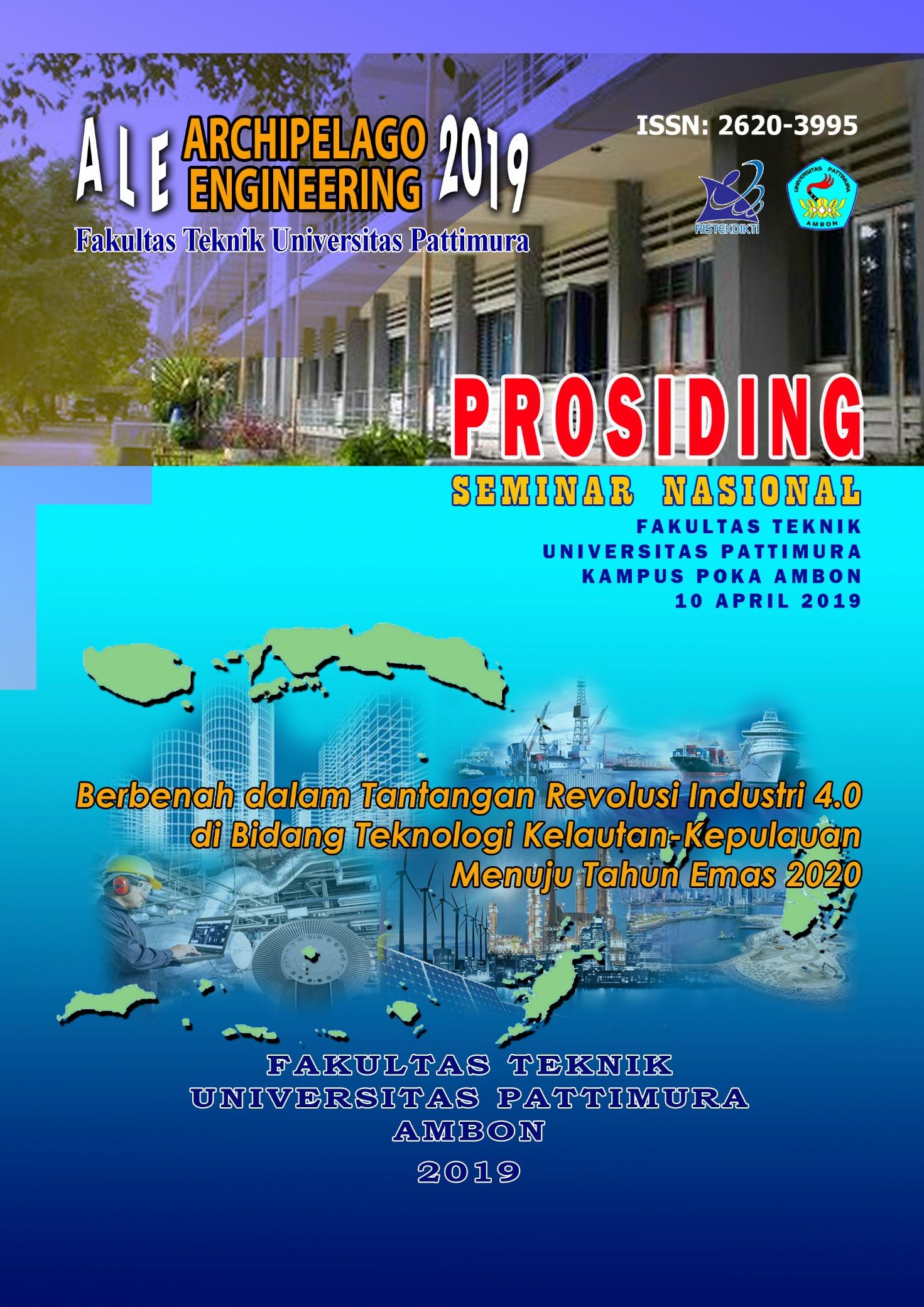ANALYSIS OF PRINCIPLE DIMENSION AND SHAPE OF PURSE SEINERS IN AMBON ISLAND
Abstract
Abstrak Purse seiners as a ship's main small pelagic fish Catcher is increasingly growing in number and size. In the last 5 years has been an increase in purse seine boats in Maluku by 20% and 15% of the overall operating in waters around the island of Ambon. Purse seiners tend to be made traditionally based on experience and not in accordance with the criteria of size comparison of a fish boat. It is very technical and operational feasibility of affect in this speed, stability and longitudinal strength . This research aims to calculate speed, tonnage (GT), the size of the principal as well as set the geometric shapes of purse seiners on the island of Ambon. The methods used in this research is a survey method by gathering primary and secondary data by making observations and measurements directly against the 32 purse seiners in Ambon island. Analysis and discussion is done through estimation the ship's speed by using the formula of Nomura, estimated tonnage (GT) using the Standard Fish Vessel Regulations by the Director-General of Fisheries Catch of Indonesia in 2004, the determination of the optimal size of the principal ship in the empirical formula by numerical – Traung and geometric forms of purse seiner . Estimation against speed (V) and the tonnage (GT) shows that the speed average (Vaverage) = 7.1 knots and tonnage average(GTaverage) = 22.4 tons. The calculation of the size of the principal ship by using empirical methods-numerical based on Traung equation with input of Vaverage and GTaverage
indicates that the principal dimension is as follows: LBP = 15.8 meters; B = 4.8 meters; D = 2.2 meters and d = 1.9 meters and form coefficient as follows : CB = 0,6 ; CW = 0,7 ; CM = 0,97 ; CP = 0,62
Downloads
References
Ayodhyoa,1985. Suatu Pengenalan Fishing Gear . Fakultas Perikanan Institut Pertanian, Bogor
Departemen Kelautan dan Perikanan RI, 2009. Undang Undang Nomor 31 Tahun 2009 Tentang Jenis Kapal Perikanan, Jakarta
Dinas Kelautan dan Perikanan Maluku, 2017. Laporan Statistik Tahunan Perikanan Provinsi Maluku, Ambon
FAO .2013.Fishing Gear Types: Purse Seines.FAO of the United Nations.Fisheries and Aquaculture Department.www.fao.or/fishery/geartype
Fyson, J, 1985. Design of Small FishingVessels.FAO United Nations. Fishing New Book Ltd, England.173p
Koesdi, Z, 1981. Perencanaan dan Pengelolaan Kapal Ikan
Lewis ,Edward,V,1988. Principle of Naval Architecture Second Edition, The Society of Naval Architecture and Marines Engineers, New JerseyLackenby,H and Milton,D, 1965. DTMB Standard Series 60. A New Presentation of The Resistance Data for Block Coefficient, LCB, Breadth-Draught Ratio and Length-Breadth Ratio Variations. British Ship Research Association (BSRA), London.75p
Nomura,M dan T.Yamazaki. 1977. Fishing Technic(1). Japan International Corporation Agency, Tokyo.205p
Rawson,KJ and EC.Tupper,1994.Basic Ship Theory.Vol.1.Hydrostatic and Strength.4th edition.Longman Group Ltd.England.375p
Traung, JO, 1960. Fishing Boats of The World 2. Fishing News Books Ltd, Roma.830p
Tamaela MJ,1988. Rancang Kapal I. Fakultas Teknik Perkapalan. Univ.Pattimura.123p
Tsudani T.1983.Illustration of Japanese Fishing Boats,Seizando-ShotenPublishing Co.Ltd,Tokyo.190p
Yahya, 2001. Perikanan Tangkap Indonesia . Fakultas Perikanan dan Ilmu Kelautan,IPB, Bogor
Watson,DGM, 2002. Practical Ship Design. Elseiver Science Ltd, Oxford.558p
An author who publishes in the ALE Proceeding agrees to the following terms:
- Author retains the copyright and grants ALE Proceeding the right of first publication of the work simultaneously licensed under the Creative Commons Attribution-ShareAlike 4.0 License that allows others to share the work with an acknowledgment of the work's authorship and initial publication in this journal.
- Author is able to enter into separate, additional contractual arrangements for the non-exclusive distribution of the journal's published version of the work (e.g., post it to an institutional repository or publish it in a book) with the acknowledgment of its initial publication in this journal.
- Author is permitted and encouraged to post his/her work online (e.g., in institutional repositories or on their website) prior to and during the submission process, as it can lead to productive exchanges, as well as earlier and greater citation of the published work (See The Effect of Open Access).
Read more about the Creative Commons Attribution-ShareAlike 4.0 Licence here: https://creativecommons.org/licenses/by-sa/4.0/.






